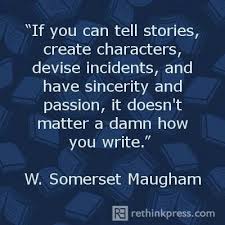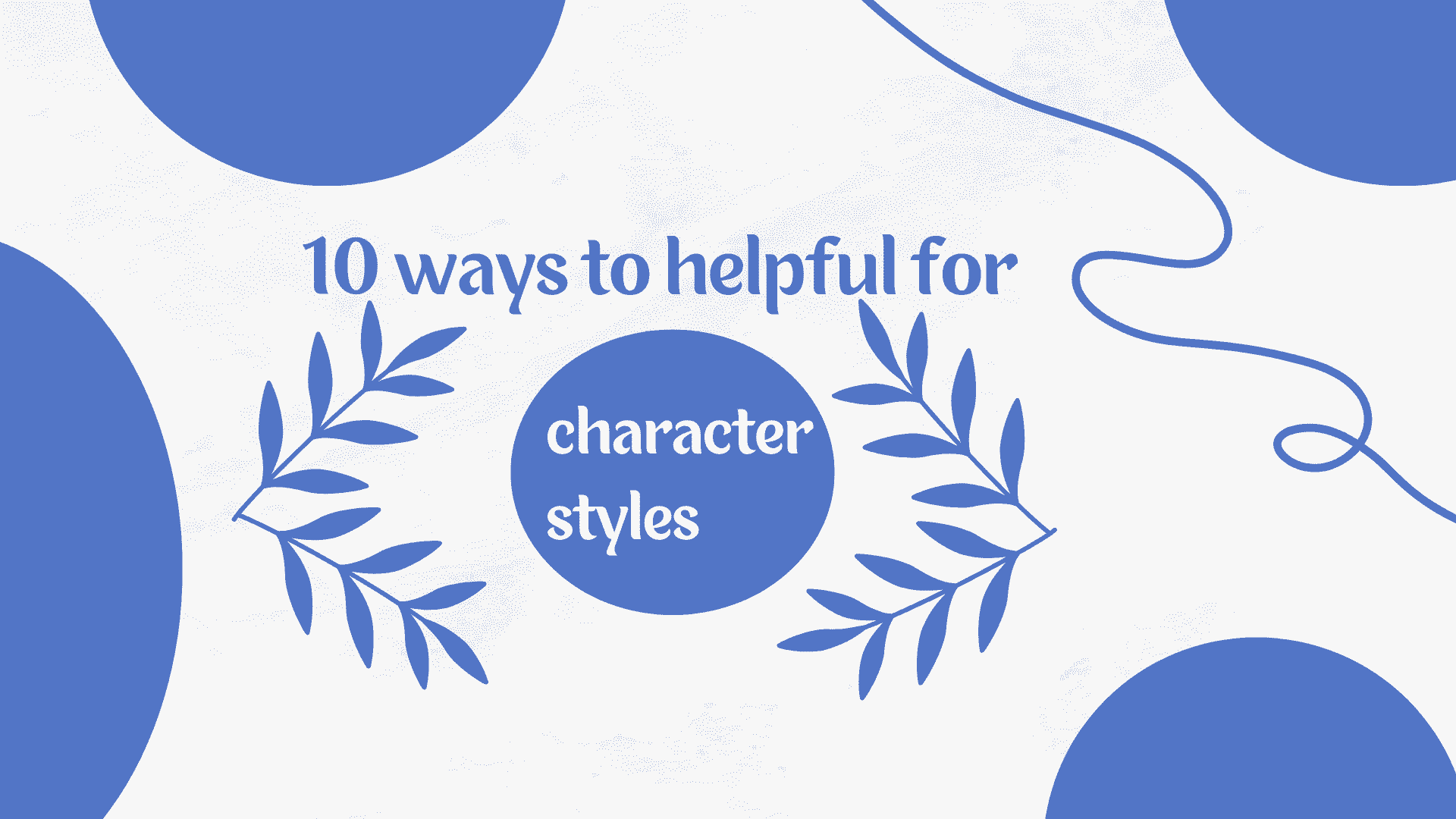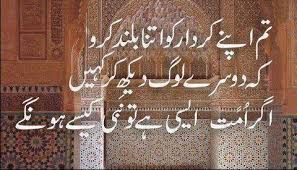10 ways to helpful for character styles
Character styles refer to the various types or archetypes of characters commonly found in literature, film, theater, and other forms of storytelling.
These styles help define the characteristics, traits, and roles of the characters, allowing audiences to easily recognize and understand their purposes within a narrative. Here are some common character styles:
- Protagonist/Hero: The central character who drives the story forward, often embodying qualities such as courage, determination, and a strong sense of morality.
- Antagonist/Villain: The character or force that opposes the protagonist, creating conflict and obstacles for them to overcome. Villains are often motivated by selfishness, evil intentions, or a desire to achieve their own goals at the expense of others.
- Sidekick: The loyal companion or assistant to the protagonist, providing support, comic relief, or a contrasting personality. Sidekicks often possess skills or traits that complement the protagonist’s strengths or weaknesses.
- Mentor: A wise and experienced character who guides and advises the protagonist, offering them knowledge, training, or life lessons. Mentors play a crucial role in the development and growth of the main character.
- Love Interest: A character who forms a romantic relationship with the protagonist, adding depth and emotional complexity to the story. Love interests may serve as motivators, sources of conflict, or catalysts for personal growth.
- Comic Relief: Characters whose primary purpose is to provide humor and lighten the mood of the story. They often have exaggerated traits or engage in comedic situations, offering a break from intense or dramatic moments.
- Femme Fatale: Typically portrayed as a seductive and mysterious woman, the femme fatale character style is often associated with film noir and crime genres. She uses her charm and sexuality to manipulate others, usually leading to their downfall.
- The Wise Old Man/Woman: An elderly character known for their wisdom, knowledge, and insight. They often possess a deep understanding of the story’s world or possess mystical or magical abilities.
- Trickster: A mischievous and unpredictable character who uses cunning and wit to disrupt the normal order of things. Tricksters challenge conventions and expose hypocrisy through their actions and words.
- The Everyman: A relatable and ordinary character who represents the audience’s perspective within the story. They lack exceptional qualities or skills but navigate the narrative, often highlighting the extraordinary circumstances they encounter.
These are just a few examples of character styles, and in reality, characters can be complex and blend multiple styles. Successful storytelling often involves a mix of various character styles to create a diverse and engaging cast.
An instructive event __!!
The Holy Prophet (peace be upon him) passed a place while going towards Jerusalem on the night of Ascension, he began to smell a very high and wonderful fragrance.
The Prophet (Peace Be Upon Him) asked Hazrat Gabriel (Peace be Upon Him) that this
How is the fragrance? Got the answer that “.. The daughter of Pharaoh is coming out of the graves of Mushatha and his descendants”..
Then Hazrat Gabriel (peace be upon him) narrated his story that!…
“Mishatha was the maid of Pharaoh’s daughter and she had secretly converted to Islam.
One day, while combing Pharaoh’s daughter, the comb accidentally fell from her hand. When she began to pick it up, her tongue blandless Bismillah came out. On it The princess said that you spoke a strange Kalima today.
Lord, my father is Pharaoh, so whose name have you taken?
He replied: “The Pharaohs are not the Lord, but the Lord is Allah who provides for me and you and himself to Pharaoh.” The princess said, “So do you consider anyone else your Lord except my father?”
He replied: “Yes, yes, mine, you and your father, Allah is the Lord of all.”
The princess was called by her father. He became furious and from that time sent a call to the court and said, “Do you known anyone else your Lord except me?”
He said that”.. Mine and your Lord is Allah Almighty, the Almighty, the Almighty. ”
Pharaoh ordered at the same time that the cow made of copper should be heated well and when it has completely become like fire, his children should be put into it one by one.
Finally, he himself should be put in it. … Because she was heated. When it became like fire, she ordered to put her children one by one in it.
He said: “King, grant my request to put the bones of me and these children in the same place”. He said:
Well, some of your rights are our responsibilities. So it is approved”
Both his daughters were thrown into it in front of his eyes and they immediately burned to ashes.
Then came the youngest who was drinking milk from his mother’s breast… When Pharaoh’s soldiers dragged him, darkness covered the eyes of this pious man.
Allah Almighty gave this child a tongue at the same time and he said out loud”: Dear mother! Don’t be sorry, O’ mother, don’t step back even a bit.
The greatest virtue is to sacrifice life for the truth, so they got patience. This child was also thrown into the fire. And finally their mother was also in the same fire.
Burned to death”… “The aromas of his fragrance are coming from his palace of paradise”. Subhanallah
(Mosnad Ahmed) 2018-2 (1) (The people of faith)
A polite request 
Our goal is to present you the best Islamic, social, historical, informative, corrective articles.
In which your one share can become a great character as a continuous charity and become a cause of reward. Come along with us and be a part of this charity
Glory be to Allah and praise be to Allah. Glory be to Allah the Greatest. When love is for the sake of Allah, it never dies.
Once upon a time, a non-Muslim converted to Islam, he was asked what influenced you about Islam.
So he said that only one incident led to my guidance.
Said that Majlis of Rasool (Peace Be Upon Him) was held and people were crowded.
One person said Prophet نہیںل عليه الله عليه وسلم pray for me. My child is missing for many days. May he be found.
Before the Prophet’s hands were raised.
A person was present in the Majlis and the Prophet (PBUH) stood up. I have just passed through that garden.
His baby was out there playing with the kids. When father heard that my child is in that garden, he ran.
The Prophet (peace be upon him) said, “Stop him, call him back.”
He said: O Prophet (PBUH) do you know what the feelings of a father are. Said to be well aware.. But I have called you, there is a purpose of calling you. He said, “Yes, the Holy Prophet جیل حضور الله عليه وسلم should guide us.”
Said, when you see your child playing with children in the garden, then don’t start calling him son son.
Call me by the name you have given. Sir, he is my son. What is the problem if I call him my son?
Said that you are separated for many days, your tone will be very juicy.
And you don’t know that there is an orphan among the players.
And when you will call your son as son in such a sweet tone, he will hurt his heart and will say, I wish I had a father today, he would call me son.
Said to fulfill this desire by going home.
You said don’t love your wife in front of a widow, you were prevented from showing your wealth in front of the poor.
The Prophet (peace be upon him) even said that do not disturb your neighbor with the smell of your meat.
This non-Muslim said that in the incident of the Prophet (peace be upon him) never call your son son son in front of an orphan. He told me what is Islam.
May Allah grant us the ability to follow the religion of the Holy Prophet (peace be upon him).
Ameen
CONCLUSION:
Character styles of life refer to the unique ways in which individuals approach and navigate various aspects of their lives. These styles can encompass a wide range of characteristics, behaviors, and attitudes that define a person’s overall approach to life.
While there are numerous 10 ways to categorize character styles, here are some common ones:
10 ways to helpful for character styles
- Adventurous: These individuals thrive on excitement, novelty, and exploration. They seek out new experiences, take risks, and embrace challenges in all areas of life.
- Analytical: People with an analytical style are highly logical, rational, and detail-oriented. They excel at problem-solving, critical thinking, and making well-informed decisions based on evidence and data.
- Creative: Creative individuals have a knack for imaginative thinking, originality, and artistic expression. They often think outside the box, embrace unconventional ideas, and find inspiration in various forms of art.
- Optimistic: Optimistic individuals have a positive outlook on life, seeing opportunities in challenges and setbacks. They tend to be resilient, hopeful, and proactive in pursuing their goals.
- Practical: People with a practical style prioritize efficiency, realism, and tangible results. They focus on practical solutions, utilize resources effectively, and value functionality over idealism.
- Social: Social individuals thrive on human interaction and building relationships. They are outgoing, empathetic, and enjoy being part of a community. They often prioritize collaboration, communication, and teamwork.
- Spiritual: Those with a spiritual style prioritize inner growth, self-reflection, and connection with something larger than themselves. They may seek meaning, purpose, and transcendence through practices such as meditation, prayer, or contemplation.
- Disciplined: Individuals with a disciplined style value structure, order, and self-control. They are highly organized, diligent, and committed to achieving their goals through careful planning and consistent effort.
- Carefree: Carefree individuals have a relaxed and easygoing approach to life. They prioritize enjoyment, spontaneity, and living in the present moment. They often value freedom and avoid unnecessary stress or obligations.
- Altruistic: Altruistic individuals are driven by compassion and a desire to help others. They are selfless, kind, and actively seek ways to make a positive impact on individuals, communities, or causes they care about.
These character styles can vary from person to person, and individuals may exhibit a combination of different styles in different areas of their lives.
It’s important to remember that these styles are not mutually exclusive and can coexist within an individual’s overall character.
FAQ:
What are the character styles?
Character style refers to the distinctive and consistent manner in which a fictional character is portrayed, expressed, and perceived by an audience. It encompasses various elements, including the character’s personality traits, behaviors, appearance, mannerisms, speech patterns, and overall demeanor.
Character style is crucial for establishing a character’s uniqueness and making them memorable and relatable to the audience.
Character style can also evolve or change throughout a story, reflecting character development and growth. As a character faces challenges or undergoes transformative experiences, their style may adapt accordingly, revealing new aspects of their personality or reflecting a shift in their attitudes and values.
How do you use character styles?
Character styles are formatting presets that allow you to quickly apply a consistent set of formatting attributes to selected text in a document. They are commonly used in word processing software like Microsoft Word or Adobe InDesign. Here’s how you can use character styles:
Create a Character Style: First, you need to define a character style. Typically, you can find this option in the formatting or styles menu of your word processing software. Give your style a descriptive name, such as “Heading 1” or “Emphasis,” and specify the formatting attributes you want to apply, such as font, size, color, bold, italic, etc.
Apply Character Style: Once you have defined your character style, you can apply it to the desired text. Select the text or place the cursor within the text that you want to format. Then, locate the character styles panel or formatting options in your software and choose the appropriate character style from the list.
The selected text will automatically adopt the formatting attributes defined in the character style.
Modify Character Style: If you want to make changes to a character style, you can modify it. Locate the character styles panel or style options in your software and find the desired character style. Right-click on the style and choose the “Modify” or “Edit” option.
Make the necessary adjustments to the formatting attributes, and the changes will be applied to all text that has that character style applied.
Create and Apply Multiple Character Styles: You can create multiple character styles for different formatting purposes. For example, you might have a style for headings, another for quotes, and another for emphasis.
Apply the appropriate character style to each section of text by selecting the text and choosing the desired style from the character styles panel or formatting options.
Remove Character Style: To remove a character style from a selected text, you can either select the text and choose the default or “Normal” style from the character styles panel or remove the specific formatting attributes manually.
Using character styles can save you time and ensure consistent formatting throughout your document, especially in larger projects or when working collaboratively.
 What are character styles and paragraph styles?
What are character styles and paragraph styles?
Character styles and paragraph styles are formatting tools used in document processing software, such as Adobe InDesign, Microsoft Word, or Google Docs, to apply consistent formatting to text elements within a document.
Character Styles: Character styles are used to define and apply formatting attributes to individual characters or groups of characters within a paragraph. These attributes can include font family, font size, bold, italic, underline, color, and more.
By creating and applying character styles, you can ensure consistency throughout your document and easily make global changes to the formatting if needed.
For example, you could have a character style called “Heading” that applies a specific font, size, and color to all your headings.
Paragraph Styles: Paragraph styles are used to define and apply formatting attributes to entire paragraphs or blocks of text. These attributes can include alignment, indentation, line spacing, space before and after paragraphs, and more.
With paragraph styles, you can quickly and consistently format paragraphs throughout your document. For instance, you could create a paragraph style called “Body Text” that applies a specific font, size, alignment, and spacing to all the main content paragraphs in your document.
The main advantage of using character styles and paragraph styles is their efficiency in maintaining consistency and making global changes.
If you decide to change the formatting of a specific character or paragraph, you can simply update the corresponding style, and all instances of that style will be automatically updated throughout the document.
This saves time and effort, especially when dealing with large documents or multiple documents with similar formatting requirements.
It’s worth noting that the specific features and capabilities of character styles and paragraph styles may vary depending on the document processing software you are using, but the general concept and purpose remain consistent across different applications.
Why do we use character styles?
Character styles are used in various applications and document formatting systems to apply consistent formatting to specific text elements within a document. They offer several advantages and are commonly used for the following reasons:
Consistency: Character styles ensure consistent formatting throughout a document or a set of documents. By defining a character style for specific text elements such as headings, body text, quotes, or emphasis, you can easily apply the same formatting to similar elements without the need for manual adjustments.
Efficiency: When working with large documents or complex layouts, character styles help streamline the formatting process. Instead of individually formatting each instance of a specific text element, you can simply apply the appropriate character style, saving time and effort.
Global Updates: Using character styles allows for easy global updates in case you decide to change the formatting of certain text elements.
By modifying the properties of a character style, such as font, size, color, or spacing, you can instantly update all instances where that style is applied, ensuring consistency across the document or project.
Document-wide changes: Character styles also provide the flexibility to make document-wide changes efficiently. For example, if you decide to change the font for all headings in a document, you can modify the character style associated with headings, and the change will automatically be applied to all instances of that style.
Collaboration and Maintenance: When working collaboratively on a document, character styles facilitate consistency among different contributors. By adhering to a predefined set of character styles, multiple authors can work on different sections of a document while maintaining a unified formatting style.
Overall, character styles help streamline the formatting process, ensure consistency, simplify updates, and enhance collaboration, making them an essential tool for efficient and professional document formatting.


